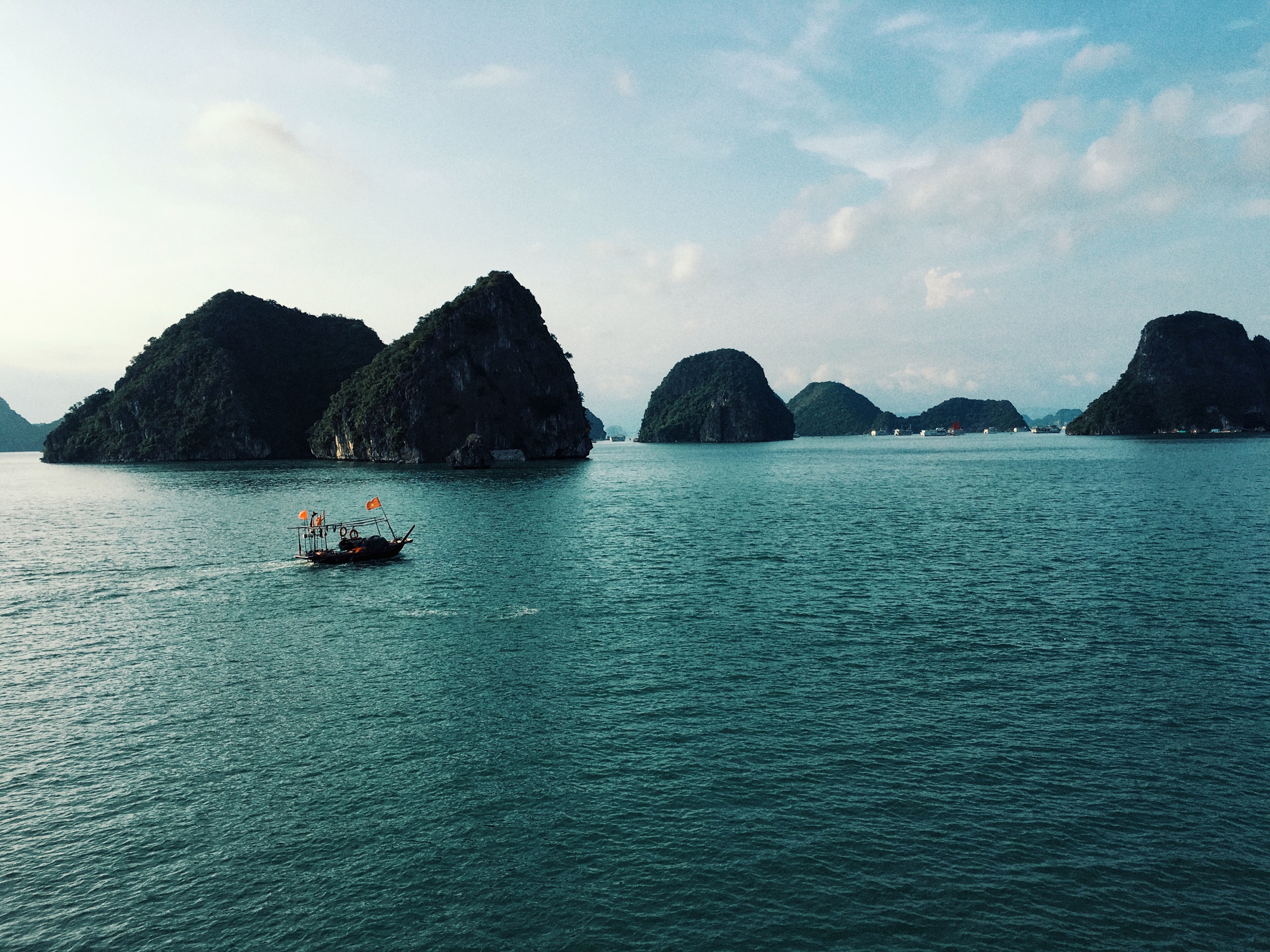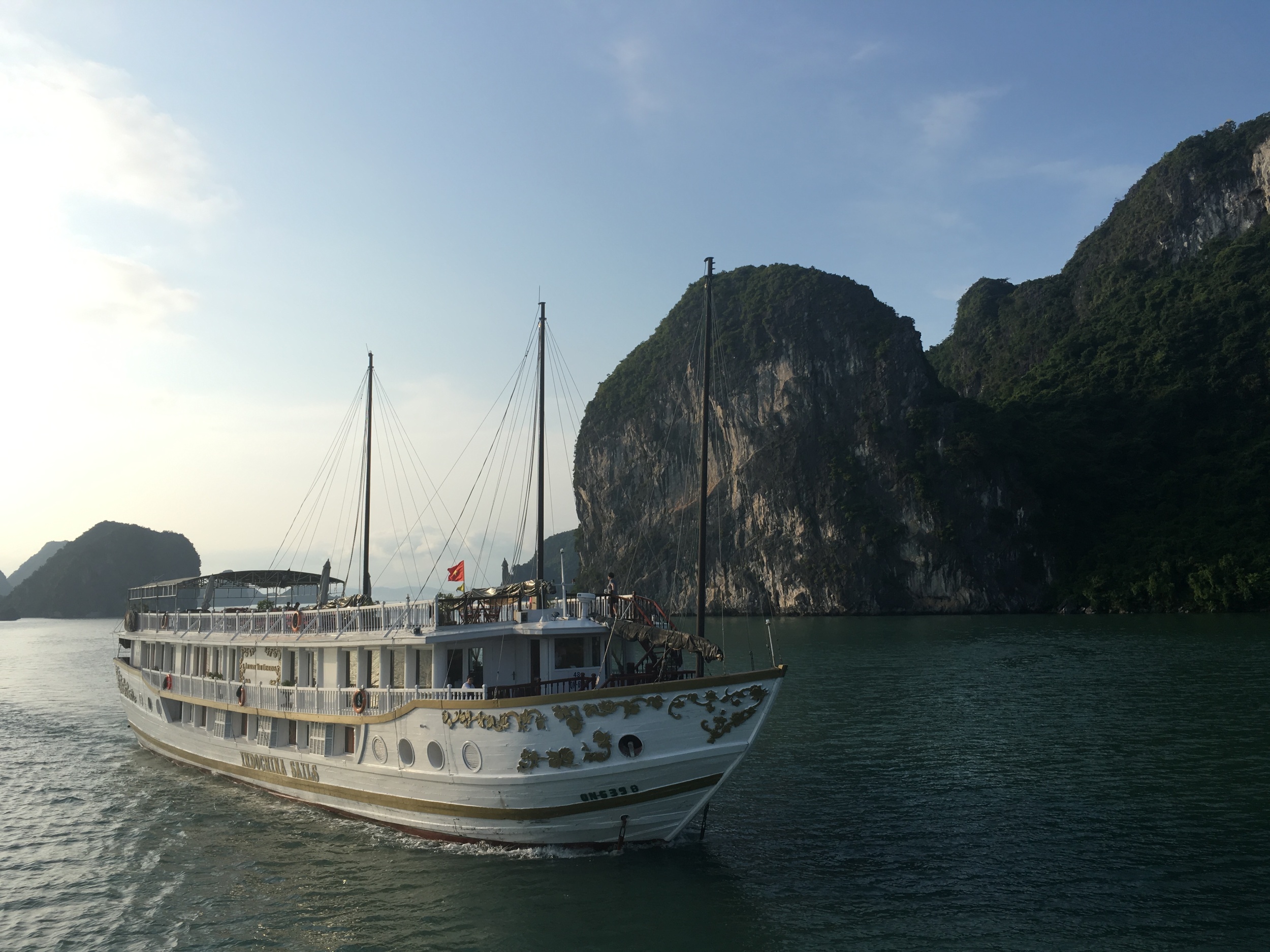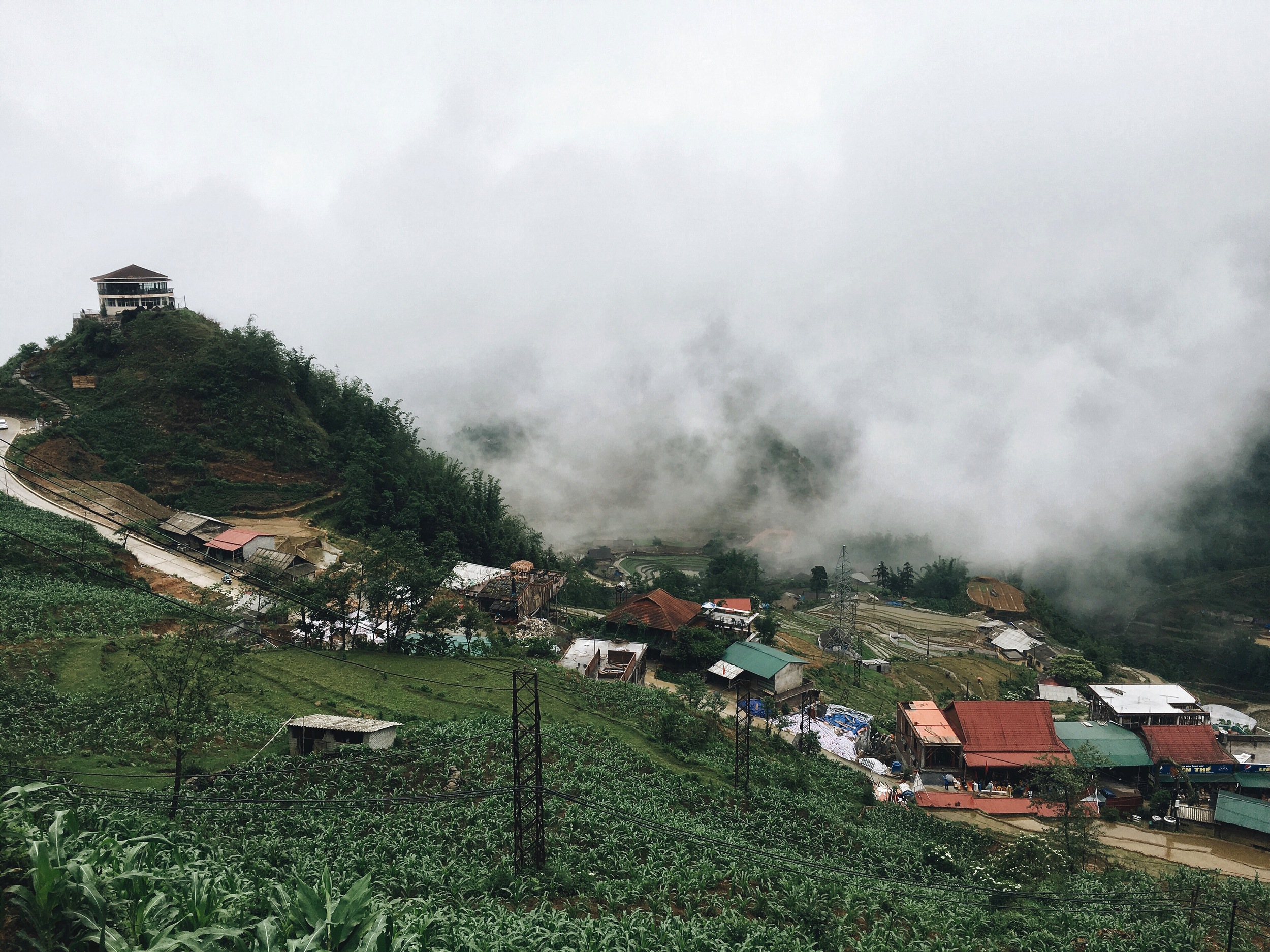After having taken place in a shuttle-bus, that brings you from the center of Hanoi to Halong-Bay, you will be explained the different schedules of the guests who booked "2 days 1 night" or "3 days 2 nights".
Prior my departure to Vietnam, I opted for the package "2 days 1 night", which means you will spend 1 night on a cruiser boat, and the crew will do their best to keep you entertained for the the 2 half days on the boat, the "Halong Silversea Cruise".
The journey starts right in the center of the old town of Hanoi. Most companies offer a free shuttle from any hotel in the center of Hanoi, to the docks where you get on the boat. The ride usually takes about 3 to 4 hours.
After 90 minutes, all the shuttles have a break at the same tourist-trap, where you can buy local products, food, snacks, drinks for the rest of your trip, and of course there are a couple of toilets, which looked pretty clean for vietnmese restrooms.
As soon as you leave the bus, the Ha Long Bay experience starts. We jumped on a smaller boat, had to put on swimming-vests, and 45seconds later, we docked on the main cruiser. Totally worth it, to put on the safety vests.
On the boat, we got introduced to the boat-crew. The manager, main contact during the cruise, was the only person who was fluent in english. But it really didn't bother, most of the crew would understand all the basic words in english. After a short introduction it was time for the check-in, where all the guests got their room keys. I never expected such a nice room on a boat! Beautifully furnitured bedroom, with an even nicer looking bathroom.
We barely had time for a shower, and lunch was already served. 4 to 5 differents meals were served, and all of them were crazy delicious. I really never expected that sort of quality food on a cruising ship. Can't complain about the lunch part of the first day. But after having had breakfast, a coffee break at the rest-area, most of the guests weren't really hungry around 1 pm.
No time for boredom! From lunch, into the bathing suits, into the kayak. The kayaking part was my favorite part of the whole Ha Long Bay experience. I never kayaked before. So having the chance to get introduced to kayaking in the middle of nowhere, among the huge rocks, the blue-greenish water, that was absolutely surreal. And I had the chance to have met a great lady on the boat, who was my partner. So I shared the kayak together with Kieu.
After 45 minutes of kayaking, some people could swim around the boat, or go on the rooftop, to enjoy the views and a couple of cocktails.
One hour later, we visited a "pearl farm". Apparently, according to the guide, there are only two pearl farms in all of Vietnam, and the one we visited, was a colaboration amongs the viets and the japanese. Of course, after the tour on the pearl farm, you get invited to buy pearl earrings, collars, bracelets. But for a really affordable price, so that I felt obliged to buy earrings for my mom.
After the farm, it was time for dinner. I gotta admit, there was barely no time left to enjoy your
air-conditioned room on the boat, or enjoy the roof top for a couple more hours. The dinner was by far not as classy as lunch. It was all kind of different vietnamese dishes, that you had to share with the table. During and after dinner, the manager, was trying to get the guests into the mood for karaoke. Nobody was drunk on the boat, because they didn't gave us the time to enjoy a couple of glasses. So it was disappointing, that there wasn't any partying on the cruise.
The three girls on our table, and I, we spent some time on the roof top, where it was so dark, that you hardly couldn't recognize the rocks around the boat. After an hour of chatting, we all went to bed.
The next morning, we all had breakfast, went to visit a cave, and after the cave, some guests were brought to a different cruiser, because they opted for the "3 days 2 nights" package. Later my kayak partner, Kieu from Austin, told me that she spent her 2nd day on a little island, where they could play beach-ball, do kayaking, or go swimming. The cabins with their bedrooms, weren't air conditioned during these very hot weeks, and of course didn't look as fancy as the rooms on our boat.
So if you're asking me, which package would be the best to book. I really can't tell. I would have loved to spend more time on the boat, chilling or kayaking. But if you gotta pay double the price for another night, for sitting in the sand, and sleeping in wooden cabins with no A.C., i'm really not sure if it's worth the money. My package "2d1n" cost 150 € (170 us$).
I gotta admit that the river is pretty dirty, there's a massive load of dirt floating around the rocks and the different boats. I'm glad I did the tour, but I wouldn't do it again.
Maybe someday as a couple I would turn back to Ha Long Bay. In my opinion it just got that touristic vibe, with a lot of entertainment around you, but I guess that's sadly the only way to discover the bay area, on the easiest way.




































